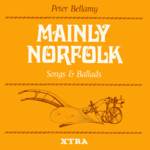> The Watersons > Biography > Lal Waterson obituary notice
Lal Waterson: Obituary notice
The Times, 10 September 1998
Lal Waterson, folk singer and songwriter, died from cancer on September 4 aged 55. She was born on 15 February 1943.
A MEMBER of Britain's foremost family of traditional singers, Lal Waterson had a plaintive voice that was one of the great glories of English folk music. She formed the Watersons with her older siblings, Norma and Michael Waterson, her cousin John Harrison and later her brother-in-law Martin Carthy. Their rich a cappella harmonies made them the most influential vocal group of the 1960s folk revival, and they were headline performers at festivals around the world. Lal Waterson went on to become an imaginative and unorthodox songwriter in her own right, and later sang and recorded with her adult children, Maria and Oliver Knight.
The Waterson family came from Hull, and music was always in the blood. But Elaine Waterson's first love was painting and she went to a school specialising in art at the age of 11. Always known as Lal, she worked for a time as a heraldic artist, but her singing career began as a teenager in the family group known first as the Mariners and then the Folksons.
By the early 1960s they had settled on the Watersons and dropped their early skiffle material to concentrate exclusively on traditional folk song. For years they ran a famous club at the Blue Bell in Hull called Folk Union One, and they made their recording debut in 1964 on the New Voices anthology on the independent Topic label, for whom Lal Waterson was still recording when she died.
The first Watersons album, Frost and Fire (1965), was billed as a calendar of ritual and magic songs, reviving the ballads and carols of ancient folk customs such as wassailing and pace-egging. Its influence was enormous, not least among rock musicians, including Steve Winwood, who later took the song John Barleycorn for the title track of a Traffic album. Further albums - The Watersons and A Yorkshire Garland - were to follow, but the group retired from touring in 1968 to a farm on the Yorkshire Moors near Robin Hood's Bay. It became in effect a folk commune of singing aunts, uncle and cousins. During their lay-off Lal and her brother Mike Waterson began writing original songs in a contemporary folk style, resulting in their joint 1972 album Bright Phoebus. They were accompanied for the first time by a band that included Richard Thompson and Ashley Hutchings from Fairport Convention, and Tim Hart and Maddy Prior of Steeleye Span, and the album caused consternation among folk purists for eschewing traditional material. More open-minded singers such as June Tabor and Anne Briggs hailed the emergence of a significant new writer and recorded covers of her songs.
By the mid-1970s the Watersons were back on the road with Norma's husband Martin Carthy replacing Harrison. Their record For Pence and Spicy Ale was voted folk album of the year by Melody Maker in 1975. Sound, Sound Your Instruments of Joy was even better, a rousing collection of long-forgotten songs in the antique hymnal tradition. This tradition had been killed off by the Victorian church organ, but the Watersons revived it. By now the musical family was expanding to include a new generation, and when Lal and Norma Waterson recorded A True Hearted Girl together in 1977, Lal's daughter Maria Knight sang backing vocals. A further Watersons album, Green Fields, was issued in 1981, but soon the family grouping took on a new form with the emergence of the Waterdaughters, comprising Lal and Maria, and Norma and her teenage daughter Eliza Carthy.
Never a prolific writer, Lal Waterson disappeared from the recording scene until two years ago when she returned with Once in a Blue Moon, a critically acclaimed album of a dozen new songs accompanied by her son oliver Knight on guitar. She recorded another album earlier this year, which Topic now plans to release posthumously.
She is survived by her daughter and son and an extended but close musical family.

